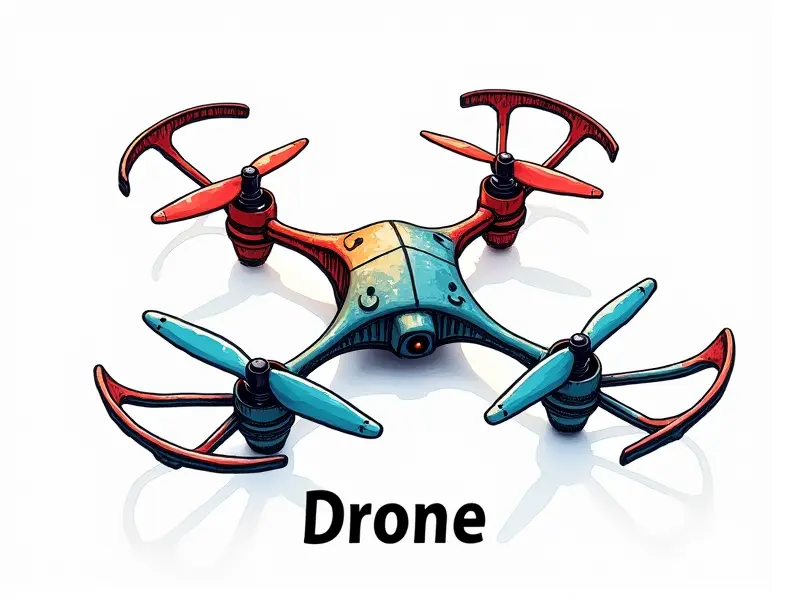RC helicopter motor types

Understanding Brushless Motors in RC Helicopters
Brushless motors are a staple component in modern radio-controlled (RC) helicopter models due to their superior performance and efficiency. Unlike traditional brushed motors, brushless motors eliminate the need for brushes and commutators, which reduces friction and wear, leading to higher torque output and longer lifespan.
The Advantages of Brushless Motors
- Efficiency: Higher energy efficiency means better performance with less battery consumption.
- Durability: No brushes or commutators to wear out, making them more reliable and long-lasting.
- Torque Density: Brushless motors offer higher torque density compared to brushed motors of similar size.
How Brushless Motors Work in RC Helicopters
In an RC helicopter, brushless motors are powered by a controller that sends electrical signals to the motor's stator coils. The rotor magnets rotate around the stator, generating torque and turning the propeller. This design allows for precise control over the motor’s speed and direction.
Choosing the Right Motor for Your RC Helicopter
Selecting the appropriate motor is crucial for achieving optimal performance in your RC helicopter. Key factors to consider include power requirements, flight dynamics, and intended use.
Finding the Perfect Fit
- Power Output: Determine the required power output based on your helicopter's weight and size.
- KV Rating: The KV rating indicates the motor’s RPM per volt. A higher KV provides more speed but less torque, while a lower KV offers greater torque at the expense of speed.
- Motor Size: Ensure that the motor fits within your helicopter's frame and has sufficient cooling capacity.
Top 5 Motors for Beginner RC Helicopter Pilots
For beginners, choosing a reliable and easy-to-use motor is essential. Here are five top picks suitable for novice pilots:
Motors for Beginners
- Turnigy Brushless Motor 3538: Known for its balance between power and durability.
- KDE Direct KDS-4017/6: Offers excellent torque at a moderate KV rating, ideal for beginners.
- T-Motor T28 3538: Provides high efficiency with a good balance of power and speed.
- Cyber Motor CM-1029: Compact design suitable for smaller helicopters, easy to install.
- Sunbird SB-4017/6: Reliable performance with a robust build quality.
How Motor KV Affects RC Helicopter Flight Dynamics
The KV rating of your motor plays a significant role in determining the flight characteristics and overall maneuverability of your RC helicopter. Understanding this relationship can help you make informed decisions about motor selection.
Influence on Performance
- High KV Motors: Provide high-speed performance, excellent for agile maneuvers but may lack power at lower RPMs.
- Moderate KV Motors: Offer a balanced mix of speed and torque, suitable for general flying and aerobatics.
- Low KV Motors: Deliver high torque with robust lifting capabilities, ideal for heavy payloads or large-scale models.
Essential Guide to RC Helicopter Motor Specifications
To make an informed decision when selecting a motor for your RC helicopter, it's crucial to understand key specifications such as power output, efficiency, and thermal management.
Key Specifications Explained
- Diameter & Length: Determine if the motor fits within your helicopter’s frame without compromising cooling.
- KV Rating: Indicates RPM per volt; higher KV values mean faster but less powerful motors.
- Torque Output: Measure of rotational force, essential for lifting and maneuvering capabilities.
The Impact of Motor Size on RC Helicopter Performance
The size of your motor directly affects the performance and handling characteristics of your RC helicopter. Larger motors typically offer more power but may be bulkier and heavier.
Size Matters
- Bigger Motors: Provide greater torque and lifting capacity, suitable for larger or heavier models.
- Smaller Motors: More compact design with excellent efficiency, ideal for agile maneuvers in smaller helicopters.
Exploring Coreless vs Brushed Motors in RC Helicopters
In addition to brushless motors, coreless and brushed motors are also used in some RC helicopter models. Each type has its own advantages and disadvantages.
Coreless Motors
- No Brushes: Eliminate friction and wear associated with brushes.
- Lightweight Design: Ideal for small-scale models requiring high-speed performance.
Brushed Motors
- Simpler Construction: Easier to manufacture and repair.
- Lower Cost: Generally more affordable than brushless motors.
Upgrading Your RC Helicopter's Motor System
For enthusiasts looking to enhance their helicopter’s performance, upgrading the motor system can yield significant improvements. Considerations include power requirements and compatibility with existing components.
Tips for Upgrading
- Assess Power Needs: Evaluate your current setup to determine if an upgrade is necessary.
- Select Compatible Components: Ensure that the new motor works seamlessly with your ESC and battery system.
- Budget for Upgrades: Plan accordingly, as high-performance motors often come at a premium price.
High-Torque vs High-Speed Motors: Which to Pick?
The choice between high-torque and high-speed motors depends on your specific needs. Understanding the trade-offs can help you select the most suitable option for your RC helicopter.
Torque vs Speed Trade-Offs
- High-Torque Motors: Ideal for heavy lifting, robust performance in windy conditions.
- High-Speed Motors: Excellent for fast maneuvers and aerobatics, but may struggle with heavier payloads.

